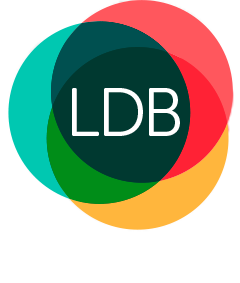Key tax outcomes of the Australian federal budget 2020
October 9, 2020

The federal government’s 2020 budget put tax cuts and jobs as the centrepieces of what it hopes will be a big-spending stimulus package for Australia’s COVID-19 ravaged economy.
The overwhelming winners of the budget are taxpayers, particularly those earning less than $120,000 per annum.
“It will unlock investment, expand the productive capacity of the nation, and create tens of thousands of jobs,” Treasurer Josh Frydenberg said.
Here is a snapshot of the key tax outcomes of the Australian federal budget 2020:
Income tax cuts
There are income tax cuts for most Australians in the 2020 federal budget, with a worker on an average wage set to receive about $20 more per week, or $1,080 per annum.
The Morrison government has backdated the second stage of previously legislated income tax cuts to July 1, 2020 and raised the income threshold, at which the 37 per cent tax rate applies, from $90,000 to $120,000.
The government will also retain the low- and middle-income tax offset for an additional year.
The changes mean a worker earning between $48,000 and $90,000 will be $20 better off per week, with a greater benefit of up to $2,430 per year for people earning more than that.
Treasurer Josh Frydenberg said, with in-principle support from Labor, the Australian Tax Office (ATO) could begin implementing the cuts within weeks.
Instant asset write-off
The ability for businesses to immediately write off the full value of new assets has been extended.
The temporary instant asset write-off tax incentive is available to businesses with up to $5 billion in annual turnover. This allows them to claim an immediate deduction of the full value of all new, eligible, depreciable assets of any value in the year they are installed or first used, providing that is between October 6, 2020 and June 30, 2022.
Full deductions for the cost of improvements made to existing depreciable assets can also be claimed.
Currently, second-hand assets of up to $150,000 in value – first used or installed by December 31, 2020 – can be claimed by businesses with between $50 million and $500 million in annual revenue.
The government has now added another six months to the use or install-by date, which now ends June 30, 2021.
At the same time, SMEs with up to $10 million in annual revenue will be able to apply ‘full expensing’ to all currently held second-hand assets up to June 30, 2022.
Tax claw back for struggling businesses
The government confirmed it will introduce a temporary loss carry-back scheme for pandemic-hit businesses.
A business that was previously profitable, but is now making a loss due to the COVID-19 pandemic, can claw back some of the taxes they paid on last year’s profits.
The scheme, estimated to benefit about one million Australian businesses, means businesses with a turnover of up to $5 billion will be eligible to offset losses, in order to generate a tax refund.
The scheme will apply to losses incurred for the three financial years to June 2022, against profits made during or after the 2018-19 financial year.
Eligible businesses will receive a tax refund when they lodge their 2020-21 and 2021-22 tax returns.
Job creation for young workers
JobMaker has joined JobKeeper and JobSeeker in the Federal Government’s lexicon. In a bid to get more young people back to work, it has introduced JobMaker credits.
Eligible employers will receive a JobMaker hiring credit of $200 per week for 16 to 29-year-olds, and $100 per week for 30 to 35-year-olds, for 12 months.
The credits are applicable for new jobs created from October 7, 2020 to October 6, 2021 and can be claimed quarterly in arrears via the ATO from February 1, 2021.
There are requirements, however. The employee must have been on JobSeeker, Youth Allowance or Parenting Payment for at least one of the previous three months at the time of hiring, and must be employed for at least 20 hours per week.
Businesses do not need to have suffered a fall in turnover to be eligible for this scheme, but they can’t currently be claiming JobKeeper payments. Also, the new jobs must be additional, and employers will have to show this.
Employers can register for the JobMaker scheme on the ATO website from December.
Assistance for upskilling and reskilling
Another measure is an exemption from the 47 per cent Fringe Benefits Tax (FBT) for employers providing training benefits to redundant or soon-to-be redundant workers where the benefit may not be related to their current employment.
The government will also provide the Commissioner of Taxation with the power to allow employers to rely on existing corporate records, rather than employee declarations and other prescribed records, to finalise their FBT returns.
The measure will take effect from April 1, 2021.
Research and development (R&D) scheme changes
The government is going ahead with changes to the research and development (R&D) tax incentive scheme, although dumping some of the more contentious elements.
The treasurer said R&D and the adoption of digital technology was “critical to Australia’s future prosperity” as he introduced the $2 billion commitment to the scheme.
The $4 million cap has been removed from the incentive’s refunds, with the change coming into effect from July 2021.
Companies with aggregated annual turnover of $20 million or more will have two tiers instead of three, and for companies below that there will be no tiered approach to the incentive.
The R&D rebate eligibility will be judged as a proportion of the business’ total expenses for the year.
Those who spend between zero and 2 per cent of their total expenditure on R&D will be able to claim 8.5 percentage points over their company tax rate. Those that spend upwards of 2 per cent will be able to claim 16.5 percentage points over their company tax rate.
The threshold on eligible R&D expenditure will increase from $100 million to $150 million, as originally planned.
There had been a push, especially from start-up founders and tech leaders, for the planned incentive changes to be scrapped. They fear tinkering with the scheme will hamper innovation.
Amendments to the scheme are currently under consideration by the Senate Economic Legislation Committee, which is due to release its report this month.
Speak to the tax experts at LDB
If you’d like to know more about how the federal budget will impact your personal or business tax affairs, contact LDB by calling (03) 9875 2900 or completing the contact form below.
